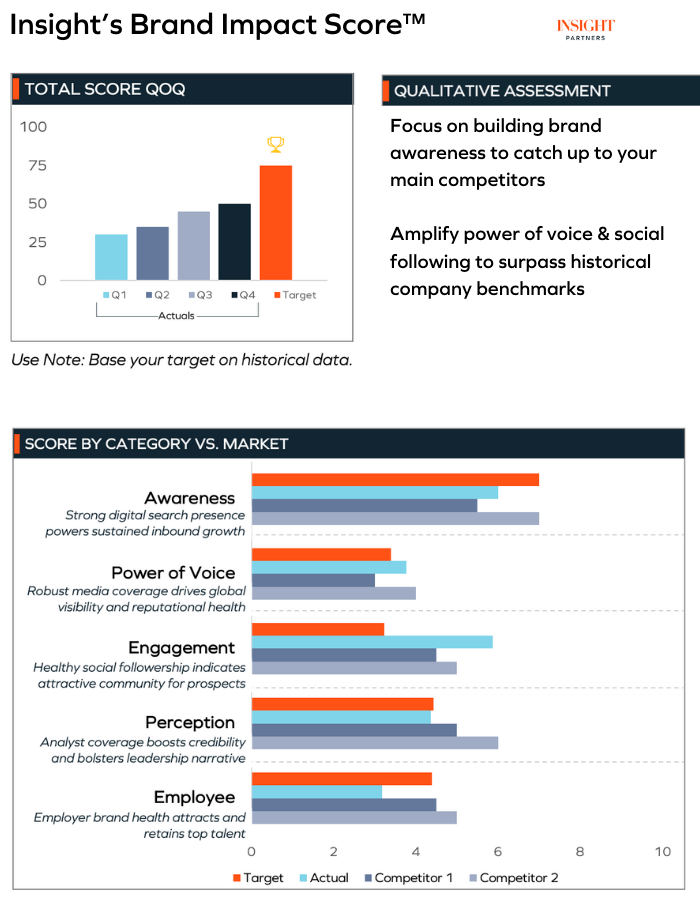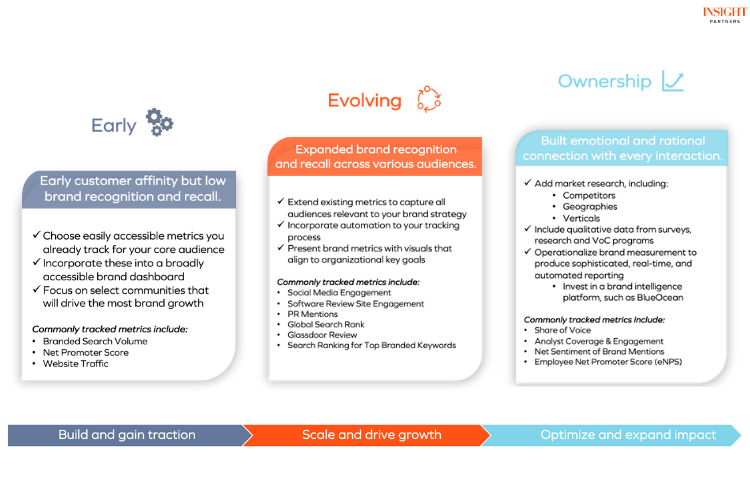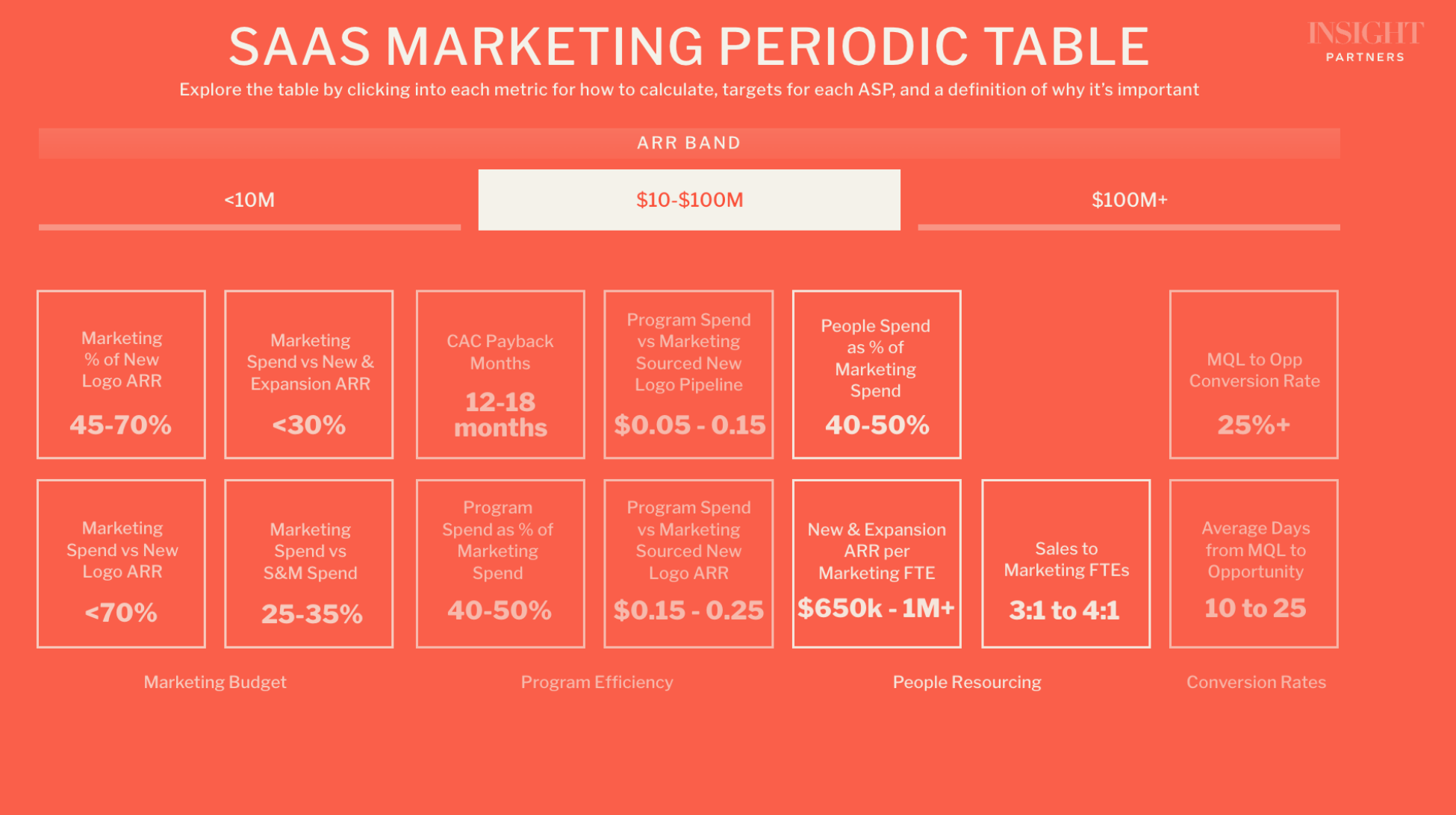Measuring the ROI of brand investments is a challenge for founders and CEOs. Yet brand is a key growth lever for companies at every stage of growth.
If you’re not measuring your brand ROI, you’ll find yourself unable to field questions from your board to justify brand spend and prove the impact of your brand-building efforts.
Catalysts to start measuring your brand may include:
- You’re hiring brand headcount, and need to know what to focus them on
- You’ve rebranded and can’t tell if it moved the needle
- You’ve hired a brand agency but cannot gauge if they’re doing a good job
- You want to mitigate the rising costs of performance marketing as your company scales and competition gets fiercer
- You want to get smarter about where and why you invest in brand
While there are many ways to approach brand measurement, the following scalable and customizable method can quickly equip your team with the tools to approach brand with a data-driven mindset.
Step 1: Align on your brand strategy
Brand is highly misunderstood and overlooked in the world of B2B SaaS. Read Founder 101: Why and when to invest in brand to better understand why brand matters, how to know when you’re ready to invest in brand, and the elements of a strong brand strategy.
Step 2: Define and understand your core audience
The activation and execution of your brand strategy may vary by audience. While demand generation efforts focus on reaching specific personas, companies, and segments within your target market, your brand efforts will cast a wider net. Brand will build trust and connection with all key stakeholders within your ecosystem.
Measuring your brand within these audiences can help you track key organizational goals at every stage of growth. As your company matures, your brand measurement will track more complex metrics to capture more channels and audiences as your marketing team and resources grow.
- Early stage companies will initially focus on how their brand resonates with customers, prospects, and partners to ensure product-market fit. Example: As a little-known developer tools company, Company A focuses its brand measurement efforts on targeting the developer community by tracking metrics (including mentions, reposts, shares) that correlate with user engagement across sites such as Reddit, GitHub, and Stack Overflow.
- Growth companies will start to tailor their brand strategy to incorporate employees, competitors, and industry analysts and influencers to continue driving leadership within their market space. Example: As a well-known brand within the developer community, Company A expands its brand measurement efforts to include how it stacks against competitors, and how well its brand resonates in the market, including with employees, partners, and analysts.
- Late-stage companies will start to consider the performance of their investor brand in preparing for exit and aspiring to become a household name. Example: As a well-known company within the B2B SaaS world, Company A is looking to exit, talking to analysts and investors, and tracking brand metrics that align with their north star of building a brand the market trusts.
Step 3: Define your scorecard and establish KPIs to track brand impact
Following the strategy you defined in steps one and two, you’ll now build a brand scorecard. To illustrate, we’ll show you the brand scorecard Insight has built for our portfolio companies, the Brand Impact Score™, and walk you through best practices for building a brand measurement framework that’s customizable and scalable, so it can evolve with you at every stage of growth.
Insight’s Brand Impact Score™
The approach illustrated below categorizes the elements of brand we generally advise portfolio companies to track. For each of these categories, we’ve chosen 3-5 metrics and created an algorithm that weighs and aggregates these metrics to produce category scores out of 10 and an overall score out of 100.

Brand measurement best practices
In creating, testing, and iterating on the Brand Impact Score™ we’ve established the following best practices for brand measurement.
Make sure you establish…
- Regular tracking cadences
- Track individual metrics systematically in reporting dashboards
- Analyze metrics in aggregate on a quarterly basis
- Frequent progress updates, including QoQ and YoY calculations
- Quarterly and yearly targets that align with broader organizational goals
- Buy-in from executive leadership on metrics and targets to measure success
- Visibility by making your brand scorecard accessible across the organization
Choose metrics that are…
- Easily accessible
- Tied to your company’s revenue goals
- Most important to your unique needs and goals as a business
- Best suited to your stage of growth, industry, selling motion, geography, and target audience
Remember…
- Brand measurement should align with your funnel and show impact on conversion and revenue.
- Start early; you can always iterate as you go. Ensuring real-time visibility into brand tracking is the goal.
- The impact of brand work does not happen overnight. Set achievable targets based on historical data.
- Quantitative data only shows part of the story. The best brand scorecards incorporate qualitative feedback from voice of the customer programs.
Brand measurement at every stage of growth
Building your brand measurement approach is an iterative process. Your brand scorecard will change as your business grows and your brand strategy evolves. As you continue to invest in brand building, we recommend evaluating brand intelligence solutions like Insight Partners’ portfolio company, BlueOcean, whose AI-powered brand measurement approach provides real-time insights and actionable recommendations to help companies make data-driven decisions that drive growth and strengthen their brand equity. Here’s what that might look like as your scale.

Measuring brand ROI and creating a brand scorecard that tracks progress toward organizational goals is essential for founders and CEOs at all stages of growth. Developing a scalable and customizable approach to brand measurement that aligns with your funnel and shows impact on conversion & revenue will help you maximize investments and drive brand-driven growth. With the right metrics, targets, and visibility, your team will be well-equipped to identify opportunities to improve your impact and reach new heights with your brand.
Explore the SaaS Growth Acceleration Framework
Explore this topic and 40+ other critical business considerations in our interactive SaaS Growth Acceleration Framework for founders and GTM leaders.
Here’s how SaaS leaders ($10m + ARR) can use this framework to win:
- Understand the downstream implications of 40+ critical business decisions
- View how product-related decisions can shake the foundation of your go-to-market strategy
- Dig deeper into any GTM component to view key questions you should be asking when making changes







